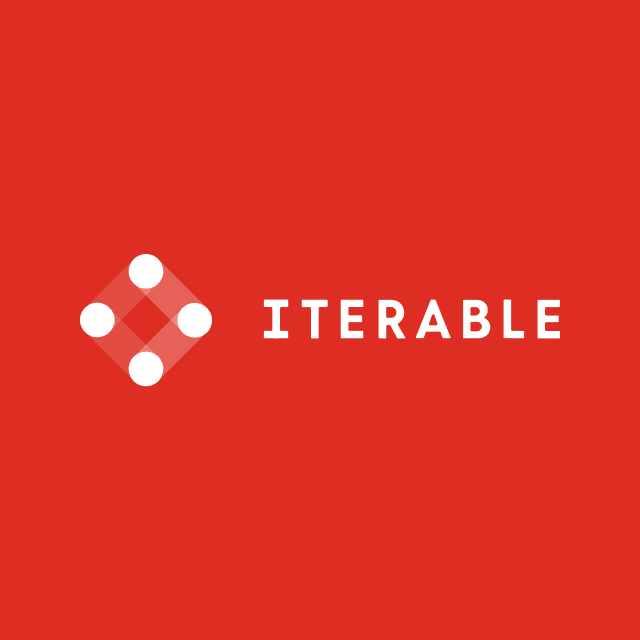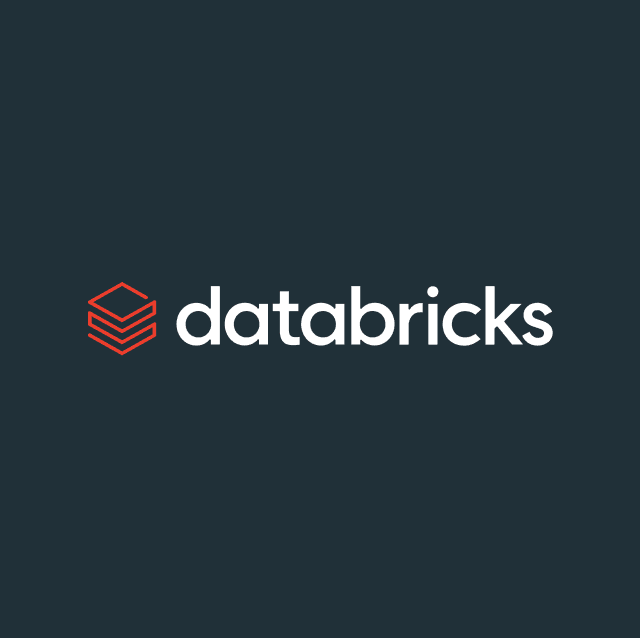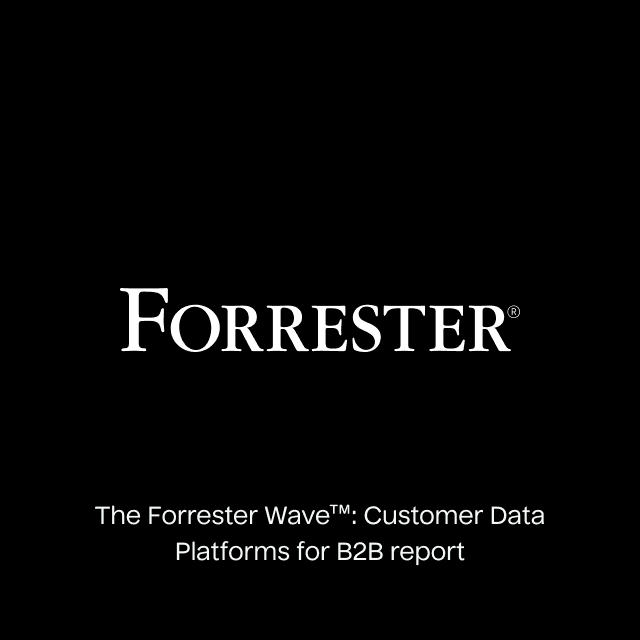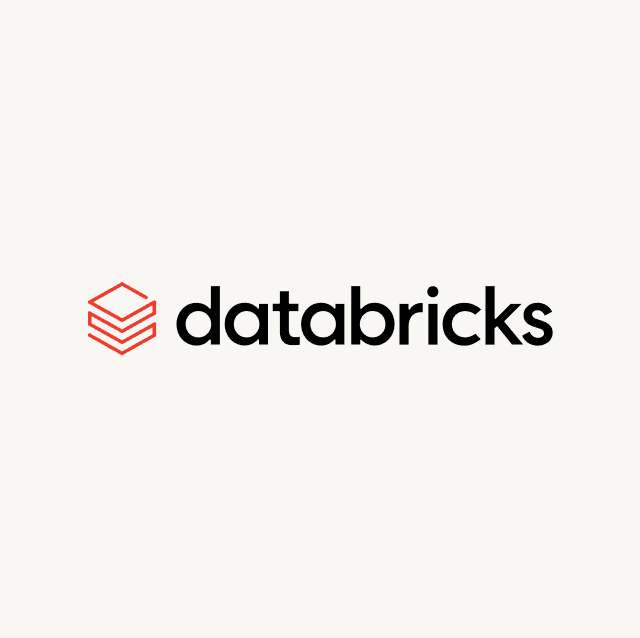Does your organization use both Salesforce and Adobe marketing suites? If so, I’m going to guess you hear about and think about things like:
- How do I keep these two systems in sync?
- How do I bridge the suites to build omnichannel audiences and journeys?
- Wait, aren’t we also storing all this data in our data warehouse? Are we paying to store our data twice?
If all this sounds familiar, this blog post is for you. Most enterprises I talk to are actively trying to reconcile their Adobe technology, Salesforce technology, and cloud data warehouse. In this post, I’ll explain why this happens and why Hightouch might be able to help solve these problems for you.
Using dual marketing suites
In the world of digital marketing, there are two undisputed heavyweights - Salesforce and Adobe. I am familiar with both of these companies since I previously worked at Salesforce, and I consulted on Adobe technology for many years after Adobe acquired my previous employer, Omniture. Salesforce started in CRM and grew to include email marketing and other digital marketing products, most famously through its acquisition of ExactTarget. Adobe began its marketing suite via digital analytics by acquiring Omniture, then acquired several other marketing products over the years, from email to content management.
While there is a lot of overlap between their respective marketing suites, it’s common for organizations to use both suites. Every week, I see different examples:
- Company A uses Salesforce CRM but sends emails via Adobe Campaign
- Company B uses Salesforce Data Cloud but uses Adobe Analytics and Adobe Target
- Company C uses Adobe Analytics and Marketo but uses Salesforce for Sales and Customer Support
- Company D uses Adobe RT-CDP for audiences and Adobe Experience Manager to manage its website, but uses Salesforce Marketing Cloud for messaging campaigns.
While your organization may use these competing marketing suites, your customers don’t care! They just want cohesive experiences that show you listen to their needs and deliver the right content, messages, and offers at the right time. And because consolidating on a single marketing suite can be complex and expensive, you must find a way to build seamless customer experiences across these two suites.
Cloud data warehouses to the rescue!
Salesforce and Adobe have created some ways to synchronize data between the suites. However, since these two marketing suites are fierce competitors, these integrations haven’t had as much investment as you might like. But more importantly, even if you can synchronize between the suites, you are left with multiple sources of truth for customer data. If you need to build an audience for a campaign, should that audience be built from Salesforce or Adobe? Does it differ by the type of marketing channel? Having multiple customer data sources of truth can lead to confusion.
Instead, many organizations have chosen to make cloud data warehouses (Snowflake, Databricks, BigQuery, etc.) the single source of truth for customer data. These organizations store all customer data (including data generated within Salesforce and Adobe) in their cloud warehouse. It’s far easier to populate audience segments, journeys, and more into Salesforce or Adobe from the data warehouse than from the rival marketing suite. Salesforce and Adobe have built robust ways to send data to the leading cloud data warehouses. Using the data warehouse as a go-between for the two marketing suites can avoid costly and sometimes brittle direct suite-to-suite integrations.
Therefore, the best way to be a Salesforce and Adobe shop is to be a data warehouse shop! Making the cloud data warehouse your source of truth allows you to maximize your use of the great marketing products provided by Salesforce and Adobe.
Hightouch - the Switzerland of marketing suites
Hightouch has suddenly emerged as a popular way to connect these marketing suites to the cloud data warehouse. Many clients have told us that one of their favorite parts of Hightouch is its ability to keep Salesforce and Adobe in sync via the warehouse and power omnichannel campaigns across both suites.
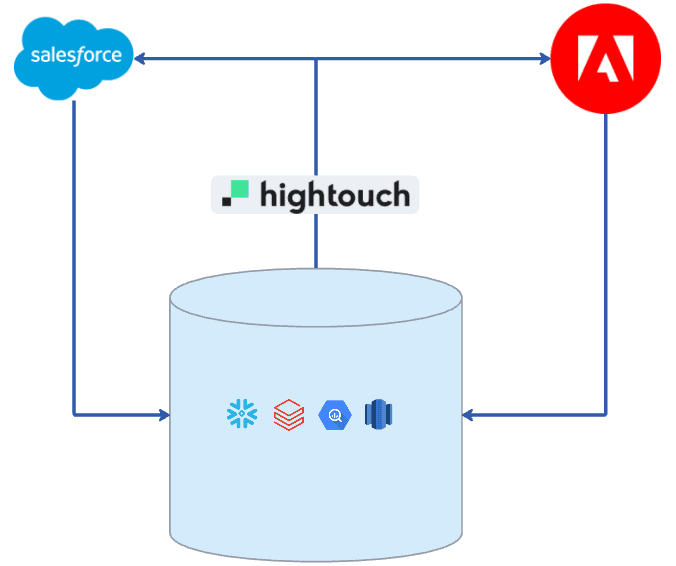
I spoke to a few organizations using Hightouch for this purpose, and here are a few real-world examples they shared on how they are using Hightouch as a bridge between the Salesforce and Adobe suites:
User profile updates
Salesforce and Adobe suites both have user profiles. These user profiles are used to build audiences and personalize experiences. For example, Adam Greco may have a user profile in Salesforce that indicates he has two kids. Adam may also have a profile in Adobe that shows the last product category he looked at was televisions. Updates to user profiles can happen at any time in either marketing suite. If a profile update is made in Salesforce, it must be reflected in Adobe, so, for example, Adobe Target can personalize the experience. If a profile update takes place in Adobe, it must be updated in Salesforce so that, for example, the user receives the correct email.
Hightouch makes it easy to keep user profiles updated in Salesforce and Adobe. When profile updates are made in Salesforce or Adobe, they can be sent to the cloud data warehouse, where Hightouch can then synchronize them with the other marketing suite. Combining the warehouse and Hightouch helps both suites have the most current information so users can have the best possible experiences.
Multi-suite audiences
Audience creation is critical for marketers. But if you’re using multiple marketing suites, your customers may perform events that impact audience inclusion in both suites. For example, suppose a user adds a product to the shopping cart but doesn’t purchase it. Adobe Analytics events can be sent to the cloud data warehouse. From the warehouse, that user can be added to an audience in Hightouch that is periodically (or instantly) sent to Salesforce Marketing Cloud for email audiences and Adobe Target for A/B testing.
Therefore, within minutes of a website session ending, the user can receive a retargeting email even though the organization uses two competing marketing suites! Hence, Hightouch helps build more comprehensive audiences using customer data from both suites to help organizations maximize the value they receive from each suite investment.
Omnichannel journeys and campaigns
Another unexpected use case we have discovered is organizations using Hightouch to build omnichannel journeys using both Salesforce and Adobe marketing activations. Both marketing suites can create customer journeys that include onsite messaging, email, and digital advertising, but they can’t always take action using tools in the competing marketing suite. Hightouch can build journeys that span across Salesforce and Adobe tools (as well as all other tools you use).
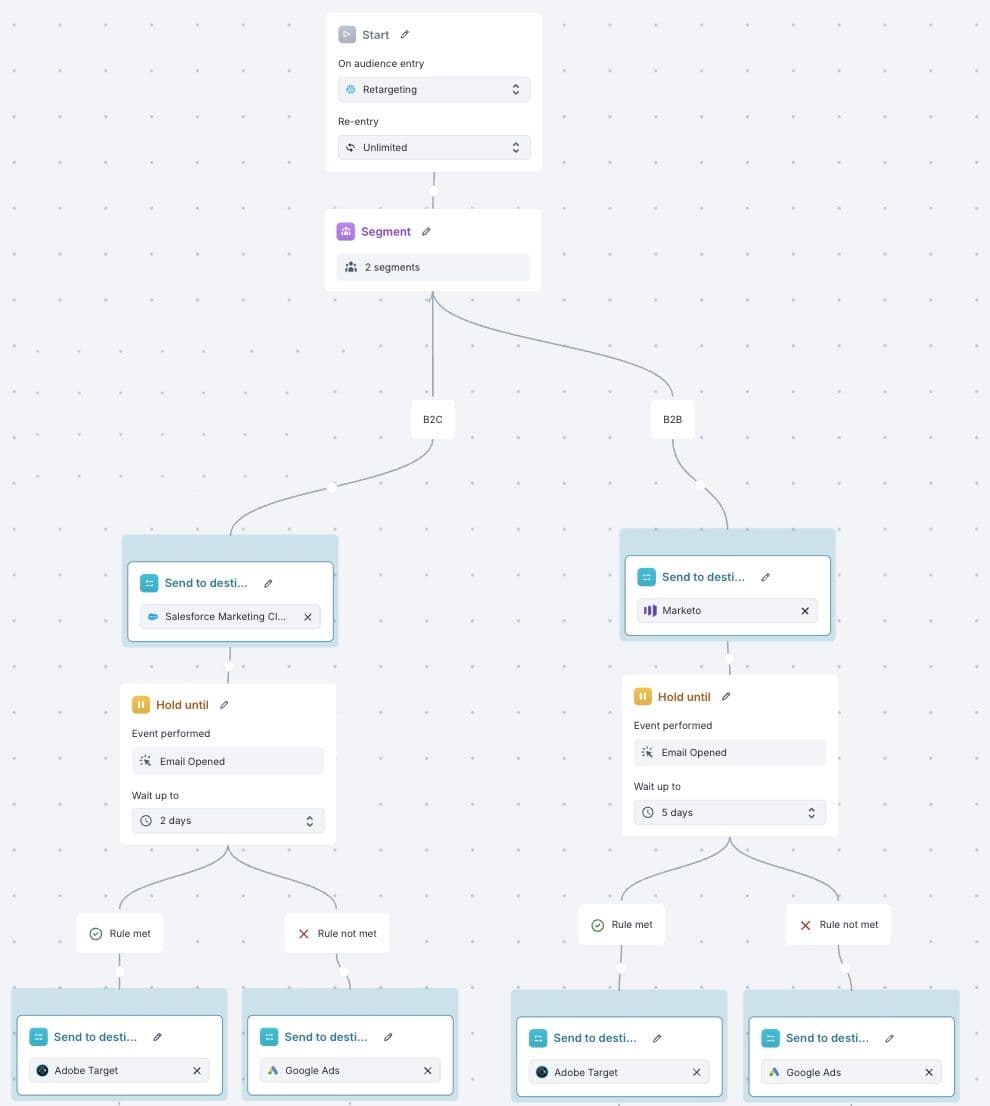
Furthermore, building this journey from Hightouch means you can use any customer touchpoint in the data warehouse to inform logic and decisions. In contrast, if you were building a journey in Salesforce or Adobe, you’d be limited to data within that suite.
Identity resolution
Accurately de-duplicating users based on all known identities is essential for marketing campaigns, personalization, attribution, and journeys. Unfortunately, if you are using both marketing suites, each will have its own method of performing identity resolution. However, in the cloud data warehouse, it's possible to perform identity resolution with a superset of data and then push more accurately resolved identifiers down to both marketing suites. Better identity resolution will lead to more accurate marketing campaigns, attribution, and journeys.
AI Decisioning
In recent months, AI Decisioning - using agentic AI to personalize content and messages - has become a hot topic. Organizations are exploring how they can use AI to provide the one-to-one personalization marketers have dreamed of but historically were unable to deliver. However, while AI decision-making is a fascinating technology, it only works if it has visibility into all customer data. If your customer data is split between Salesforce and Adobe, even the best AI Decisioning tool will falter and deliver disjointed customer experiences. Furthermore, you need your AI Decisioning to apply across your customer engagement ecosystem, so you need a solution that can push decisions into both Salesforce and Adobe.
To remedy this, organizations use products like Hightouch to centralize all customer data in the warehouse so that AI Decisioning tools can build accurate customer models and deliver the best experiences. By analyzing all customer data, AI Decisioning tools can provide the most precise decisions and personalization for both Salesforce and Adobe for activation.
Final thoughts
Salesforce and Adobe have built robust marketing suites. While it sounds counterintuitive, many organizations use parts of each suite concurrently. At Hightouch, we see a significant trend of organizations using cloud data warehouses as the source of truth for all customer data. Based on this trend, Hightouch has emerged as a popular bridge between Salesforce and Adobe. Hightouch can propagate all customer and audience updates from the data warehouse to the Salesforce and Adobe suites. In doing so, Hightouch allows marketing teams to synchronize user profiles, create audiences, resolve identities, and build omnichannel journeys encompassing both marketing suites and all customer data in the warehouse.
If you’d like to learn more about maximizing your investments in Adobe and Salesforce, contact our team for a demo.






